Related Research Articles

Sudan, officially the Republic of the Sudan, is a country in Northeast Africa. It borders the Central African Republic to the southwest, Chad to the west, Libya to the northwest, Egypt to the north, the Red Sea to the east, Eritrea and Ethiopia to the southeast, and South Sudan to the south. Sudan has a population of nearly 50 million people as of 2024 and occupies 1,886,068 square kilometres, making it Africa's third-largest country by area and the third-largest by area in the Arab League. It was the largest country by area in Africa and the Arab League until the secession of South Sudan in 2011; since then both titles have been held by Algeria. Sudan's capital and most populous city is Khartoum.

The demographics of Sudan include the Sudanese people and their characteristics, Sudan, including population density, ethnicity, education level, health, economic status, religious affiliations, and other aspects of the population.

The National Assembly is the lower house of the National Legislature of Sudan. The legislature was unicameral until 2005. The upper house is the Council of States.

Aweil is a town located in South Sudan. It is the capital of Northern Bahr el Ghazal state and the administrative centre of Aweil Center county. It is also a service centre for the surrounding villages. Refugees, war displaced returnees, nomadic cattle keepers and local families moving seasonally with their animals to source water give Aweil a mobile population.
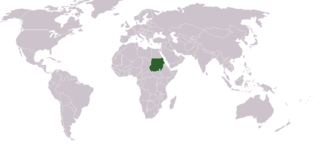
The following outline is provided as an overview of and topical guide to Sudan:
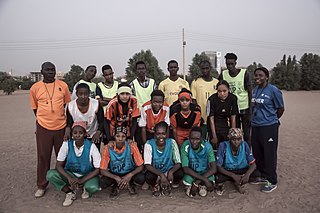
The Sudan women's national football team is the official women's national football team of the country of Sudan. The team was established in 2021, and is controlled by the Sudan Football Association (SFA), the governing body for football in Sudan.
Continuous and heavy rains in much of Sudan, starting in early August 2013, resulted in flood damage in at least 14 of 18 Sudanese states. Over 300,000 people are reported to have been affected, with over 25,000 homes reported destroyed. Government agencies report that nearly 50 people have been killed.

In September 2020, profuse and continuous rainfall in Sudan caused a devastating flood across 17 out of the 18 states Sudanese states with the Blue Nile reaching water levels not seen for nearly a century. It ranks among the most severe floods recorded in the region. A state of emergency was declared, and teams have worked to prevent damage to threatened archaeological sites. The flood affected more than 3,000,000 people, destroyed more than 100,000 homes, and left more than 100 people dead.
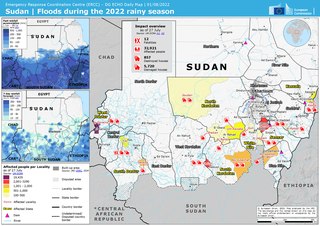
The 2022 Sudan floods saw the figure for flood-affected people in Sudan had exceeded the figure for 2021, rising to 314,500. From 2017 to 2021, there were 388,600 people affected by floods annually.

The siege of El Obeid was a siege in El-Obeid, North Kordofan, Sudan, during the 2023 Sudan conflict. The battle began on April 15, and saw the Rapid Support Forces (RSF) capture the El Obeid airport from the Sudanese Army contingent in the city. Throughout April and May, the Sudanese Army repelled several RSF assaults on the city, although by May 30, the RSF fully surrounded the city and laid siege to it.
Wad el-Mahi, or Wad al Mahi, is a locality in the Blue Nile State, Sudan. It has a population of 110,831 and was one of the main sites of the 2023 Blue Nile clashes.
Kalakla is one of the residential localities located on the southern of Khartoum State and near the Jabal al-Awliya locality.
The following lists events during 2024 in the Republic of the Sudan.
Deim Mansour is a town in the Blue Nile State, Sudan. Since 2011 and during the Sudan War, it has been the site of violent clashes between the Sudan People's Liberation Movement–North (SPLM/N) - Al Hilu and the Sudanese Armed Forces (SAF). This conflict has led to a significant displacement of people, with about 5,000 reportedly fleeing to Ethiopia following the clashes in the Kurmuk locality, which includes Deim Mansour.
Jarvis Yak was a Sudanese Governor Khartoum, a former minister, and administrator who worked in most of the northern states since the 1950s.
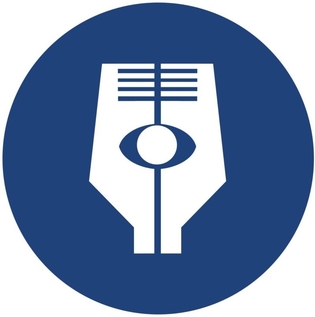
The Sudanese Journalists Syndicate (SJS) is a professional organisation for journalists in Sudan. The syndicate was re-established in August 2022 after more than three decades of absence. The last independent journalists' union was dissolved in 1989 when Omar al-Bashir came to power after a coup d'état.
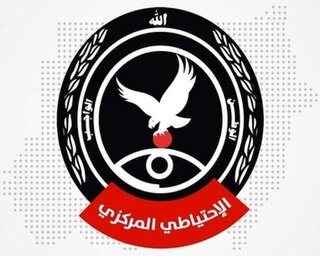
The Central Reserve Forces (CRP), also known as Abu Tira due to the eagle on its logo, is a militarised police unit in Sudan known for committing atrocities during the War in Darfur and the Sudanese revolution. The CRP is sanctioned by the US for "serious human rights abuses".

The Al-Bara' ibn Malik Battalion, also spelled as El-Baraa Ibn Malik or Abaraa Iban Malik, is a Sudanese Islamist militia that emerged within the complex network of militias and armed factions in Sudan, operating within the Sudanese Popular Resistance movement. The militia is linked to the Popular Defence Forces, a paramilitary group that was active during Bashir regime era, and currently known as the 'Shadow Battalions'. It has been active in supporting the Sudanese Armed Forces (SAF) in their ongoing battles against the Rapid Support Forces (RSF). It also has ties with the Islamic State.
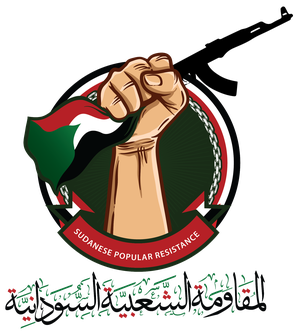
The Popular Resistance, also known as the Popular mobilisation, is a conglomerate of armed factions in Sudan that was formed in response to the ongoing conflict between the Sudanese Armed Forces (SAF) and the Rapid Support Forces (RSF). This conflict, rooted in a power struggle within the country's military structure, erupted into full-scale war on 15 April 2023.

The Wad Al-Noora massacre started at around 05:00 (GMT+2) on 5 June 2024, when the Rapid Support Forces (RSF) attacked the village of Wad Al-Noora in Al-Jazira state twice, killing at least 100 civilians. The massacre followed after the RSF sieged and opened fire on the village.
References
- ↑ "Sudan: Humanitarian Update, September 2022 (No. 08) - Sudan | ReliefWeb". reliefweb.int. Retrieved 2022-10-30.
- ↑ "سنتمتران يفصلان النيل عن فيضان 1946 القياسي واجلاء سكان قرية غمرتها السيول بالدمازين – صحيفة التغيير السودانية , اخبار السودان" (in Arabic). Retrieved 2024-03-03.
- ↑ فيضانات 1988 , retrieved 2024-03-03
- ↑ "Dawn Daily: United Nations estimates damage caused by Sudan floods". Archived from the original on 2 January 2009. Retrieved 12 August 2007.
- ↑ "Floods affect 300,000 across Sudan". الجزيرة (قناة). 23 August 2013. Archived from the original on 2019-09-09. Retrieved 24 August 2013.
- ↑ "السودان.. فيضانات تقتل وتصيب عشرات | الحرة". www.alhurra.com (in Arabic). Retrieved 2024-03-03.
- ↑ "فيضانات السودان.. عشرات القتلى و100 ألف منزل منهار وإعلان البلاد منطقة كوارث طبيعية". الجزيرة نت (in Arabic). Retrieved 2024-03-03.
- ↑ "Sudan - Rainy Season Summary (May–October) (Update 009) | Displacement". displacement.iom.int. Retrieved 2022-10-29.
- ↑ "(Updated) Sudan – Flood Death Toll Rises, Nile Climbs Above Alert Level in Khartoum – FloodList". floodlist.com. Retrieved 2022-10-30.
- ↑ Refugees, United Nations High Commissioner for. "Devastation in South Sudan following fourth year of historic floods". UNHCR. Retrieved 2022-10-30.